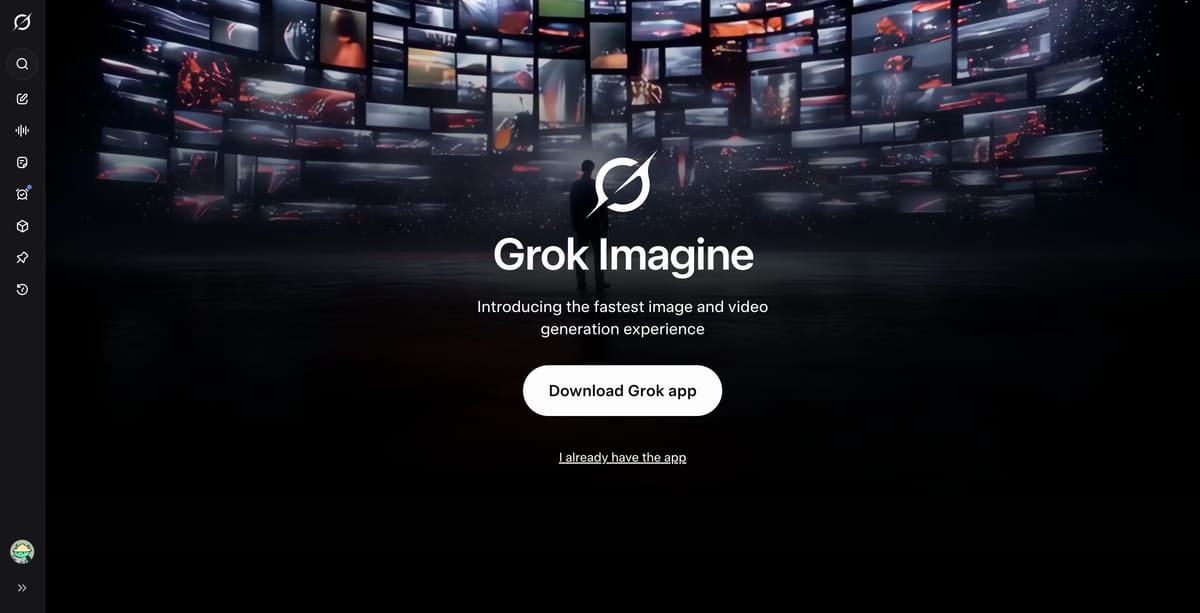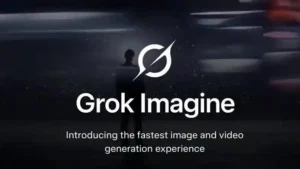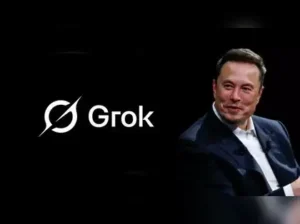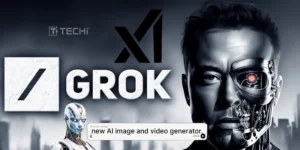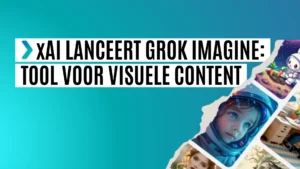xAI’s Grok-Imagine: Redefining AI Creativity and Visual Intelligence
Artificial intelligence is entering a new phase—one where machines don’t just respond with text or data, but also generate images, ideas, and immersive experiences. Elon Musk’s xAI, the company behind the Grok conversational AI, has unveiled Grok-Imagine, a multimodal leap that integrates powerful image generation into the Grok ecosystem. This move places xAI firmly in competition with OpenAI’s DALL·E, Google’s Imagen, and Stability AI’s Stable Diffusion, while promising a distinct vision rooted in Musk’s mission to make AI maximally useful, truthful, and creative.
In this article, we will explore what Grok-Imagine is, how it works, what makes it unique, its applications, challenges, and what its arrival means for the broader AI landscape.
1. What is Grok-Imagine?
Grok-Imagine is the image generation extension of xAI’s Grok large language model (LLM). While Grok initially focused on witty, real-time conversational AI integrated with Musk’s X (formerly Twitter), Grok-Imagine adds visual generative AI capabilities—allowing users to create images, illustrations, designs, and potentially even videos using natural language prompts.
In simpler terms: Grok-Imagine combines text + vision, giving users a multimodal AI assistant that can both talk and create visually.
It positions itself as a creative co-pilot not only for casual users who want memes and digital art, but also for professionals seeking design assistance, scientific visualizations, and product prototyping.
2. The Evolution of Grok into Grok-Imagine
To understand Grok-Imagine, we need to trace the evolution of Grok itself:
-
November 2023: xAI launched Grok 1.0, a chatbot integrated into X, marketed as having a rebellious, witty personality.
-
2024: Subsequent upgrades (Grok-1.5 and Grok-2) focused on improved reasoning, coding, and math capabilities.
-
2025: The release of Grok-Imagine, a major multimodal milestone, expanding the model beyond text into image generation.
This trajectory mirrors the industry’s shift from single-modal LLMs (just text) to multimodal AI (text + images + audio + video). With Grok-Imagine, xAI has entered the same competitive tier as OpenAI’s ChatGPT+DALL·E and Google’s Gemini multimodal suite.
3. How Does Grok-Imagine Work?
Grok-Imagine likely combines diffusion-based image generation with transformer-based language understanding. Here’s a breakdown of its core mechanisms:
-
Text Understanding – Grok’s LLM interprets user prompts with deep contextual reasoning.
-
Image Generation – Using a diffusion model (similar to Stable Diffusion or Imagen), it generates images pixel by pixel, guided by the textual description.
-
Real-Time Rendering – The integration with X enables fast delivery of generated visuals, optimized for social sharing.
-
Adaptive Style Control – Grok-Imagine may allow users to specify artistic styles (photorealism, anime, sketch, surrealism).
-
Multimodal Feedback Loop – Users can refine prompts iteratively, with Grok adjusting images in response to new instructions.
This integration of linguistic precision + visual creativity makes Grok-Imagine a uniquely powerful tool.
4. What Makes Grok-Imagine Unique?
While many AI companies already offer image generation, Grok-Imagine distinguishes itself in several ways:
-
Direct X Integration – Unlike competitors, Grok-Imagine is natively embedded in the X ecosystem, allowing instant sharing of AI-generated visuals as posts, memes, or ads.
-
Personality & Creativity – Staying true to Grok’s witty persona, Grok-Imagine generates not just realistic but also playful, humorous, and provocative visuals.
-
Musk’s Open Science Philosophy – xAI has shown more willingness than OpenAI to release details about its models, hinting at potential future open-sourcing.
-
Real-Time Trend Adaptation – Because Grok has access to live data from X, Grok-Imagine could create visuals aligned with current events, memes, and trending topics.
-
Hardware Optimization – Leveraging Musk’s hardware ties (Tesla Dojo supercomputer, potential GPU clusters), Grok-Imagine could achieve faster, large-scale generation.
These factors make Grok-Imagine not just another DALL·E competitor, but a system deeply tied to the social media + real-time knowledge ecosystem.
5. Applications of Grok-Imagine
The versatility of Grok-Imagine opens doors across industries.
a) Social Media & Content Creation
-
Instant meme generation on X.
-
AI-assisted visual storytelling.
-
Viral content tailored to trending hashtags.
b) Design & Marketing
-
Ad mockups and campaign visuals.
-
Logo and product design drafts.
-
Personalized brand storytelling.
c) Education & Science
-
Scientific visualizations (e.g., molecular structures, physics concepts).
-
Historical reconstructions (visualizing ancient civilizations).
-
Student projects and creative learning.
d) Entertainment & Gaming
-
Concept art for movies and games.
-
Character design for virtual worlds.
-
AI-driven storyboards.
e) Everyday Creativity
-
Personalized digital art for gifts.
-
AI portraits and avatars.
-
Home design and renovation previews.
By merging utility with creativity, Grok-Imagine can serve both professionals and everyday users.
6. Competitive Landscape: Grok-Imagine vs Rivals
The image-generation field is already crowded. How does Grok-Imagine compare?
| Feature | Grok-Imagine | DALL·E (OpenAI) | Stable Diffusion (Stability AI) | Google Imagen |
|---|---|---|---|---|
| Integration | Native to X | Integrated with ChatGPT | Open-source ecosystem | Experimental (Gemini) |
| Personality | Witty, playful | Neutral | User-driven (community mods) | Neutral-academic |
| Access to Trends | Yes (via X data) | Limited | No real-time data | Limited |
| Open Sourcing | Possible future | Closed | Open-source | Closed |
| Hardware Optimization | Tesla/Dojo tie-in | Microsoft Azure | Decentralized GPU use | Google Cloud TPU |
The key differentiator: Grok-Imagine blends social media and creativity, while most rivals focus on standalone tools.
7. Ethical and Social Challenges
Like any powerful AI tool, Grok-Imagine faces ethical dilemmas:
-
Deepfakes & Misuse – Easy creation of misleading visuals poses risks for politics, news, and personal safety.
-
Copyright Issues – Training data may involve copyrighted artworks, raising legal disputes.
-
Bias in Images – AI-generated visuals can reinforce harmful stereotypes if not carefully trained.
-
Content Moderation – Balancing free expression with safety on X will be challenging.
-
Job Disruption – Designers, artists, and ad creators may feel threatened by faster, cheaper AI outputs.
Musk has repeatedly emphasized that xAI’s goal is “maximally truthful AI”, but whether Grok-Imagine can avoid these pitfalls remains an open question.
8. What Does Grok-Imagine Mean for the Future of AI?
Grok-Imagine is more than just a new product—it’s a signal of where AI is heading:
-
Multimodality is the Future – Text-only AI is becoming outdated. The next generation of assistants will be multimodal by default.
-
Integration with Social Platforms – AI won’t just live in apps; it will live inside our communication ecosystems.
-
Real-Time AI Creativity – With access to live data, AI can create culturally relevant content in real time.
-
Musk’s Vision of AI – Grok-Imagine strengthens Musk’s push for an AI ecosystem independent of rivals like OpenAI and Google.
-
User Empowerment – Ordinary users will wield tools once limited to professional artists.
In essence, Grok-Imagine is Musk’s attempt to democratize visual creativity—placing it directly into the hands of millions of X users.
9. Future Possibilities
Looking ahead, Grok-Imagine could expand into even more ambitious directions:
-
Text-to-Video – Generating short videos from prompts.
-
3D Modeling – Creating 3D assets for gaming and VR.
-
Personalized AI Avatars – Real-time avatars based on user profiles.
-
Collaborative Creativity – Multiple users co-creating in shared visual spaces.
-
Integration with Tesla/Neuralink – Long-term synergy with Musk’s other ventures.
If Grok-Imagine evolves along these lines, it could become not just a tool, but a creative ecosystem.
10. Conclusion
xAI’s Grok-Imagine marks a major step in the evolution of AI from text-only chatbots to multimodal creative companions. By merging Grok’s witty conversational style with cutting-edge image generation, Musk is positioning xAI as both a competitor to OpenAI and a uniquely social-first AI platform.
Its integration with X gives it a powerful distribution advantage, enabling real-time meme creation, marketing visuals, and viral content generation. At the same time, it raises important challenges around ethics, copyright, and misuse.
Whether Grok-Imagine becomes a game-changing creative revolution or just another AI novelty will depend on how xAI balances power, responsibility, and accessibility. But one thing is clear: with Grok-Imagine, Musk has once again disrupted the AI race, bringing us closer to a world where any idea can instantly become an image.
For quick updates, follow our whatsapp channel –https://whatsapp.com/channel/0029VbAabEC11ulGy0ZwRi3j
https://bitsofall.com/https-yourblog-com-googles-gemma-3-270m-tiny-titan-on-device-edge-ai/
Diella: Albania’s First “AI-Made” Minister — what happened, why it matters, and what comes next

